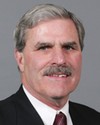Thank you for that very good question.
Unfortunately, I don't have the figures on how many people have been brought before the courts on summary conviction or indictment. However, we can find those figures and convey them to you.
Evidence of meeting #28 for Public Safety and National Security in the 39th Parliament, 2nd Session. (The original version is on Parliament’s site, as are the minutes.) The winning word was cbsa.
A recording is available from Parliament.
4 p.m.
C/Supt Mike Cabana
Thank you for that very good question.
Unfortunately, I don't have the figures on how many people have been brought before the courts on summary conviction or indictment. However, we can find those figures and convey them to you.
4 p.m.
C/Supt Mike Cabana
We are focusing on the upper levels of criminal organizations. If most of our people were to focus on the lower levels, the impact on the organizations would be minimal. However, we do recognize that a balanced approach is needed.
In answer to your question, I can say that some customers who support the industry are targeted strategically, so that we can develop intelligence and be in a position to identify the upper levels of the organization.
4:05 p.m.
Bloc

Ève-Mary Thaï Thi Lac Bloc Saint-Hyacinthe—Bagot, QC
In the early 1990s, there was a surge in tobacco smuggling. I studied criminology, and I remember that a major awareness campaign was launched to help people understand that if they were caught smuggling or carrying smuggled products in their vehicles, the products would be seized. The purpose of that measure was to dissuade people from carrying three or four cartons or even whole boxes full of cigarettes for resale. The point was to hurt the organization. There were severe penalties in place, to make it perhaps more difficult to recruit people.
If smugglers or others engaged in smuggling are brought before the courts on summary conviction, doesn't that send a message that it's no more serious than a fine for going through a red light or speeding? Since that is not necessarily a criminal act, don't we trivialize the fact that tobacco smuggling is wrong?
4:05 p.m.
C/Supt Mike Cabana
Indeed. However, one must understand that the decisions to proceed by summary conviction or indictment must be based on evidence available to the Crown attorney at that time. I do not think that I'm able to speak for justice. However, you are absolutely right with respect to the deterrent effect of certain police action against these clients. Last year, in 2007, we seized 257 vehicles, some of which belonged to these clients.
Another feature that must be acknowledged is that during the 1990s, crime associated with contraband tobacco was not at the level we are experiencing today. During the 1990s, as you said, much emphasis was placed on clients. Through an analysis of the causes, we realized that the majority of people arrested for possession of contraband goods, were not paying their fines. This placed an additional burden on the judicial system and had a very minimum impact on an organization's operation.
4:05 p.m.
Bloc

Ève-Mary Thaï Thi Lac Bloc Saint-Hyacinthe—Bagot, QC
All right.
Earlier, in response to Mr. Dosanjh's question, you said that you did not have any statistics on the closing down of contraband activities, but that you were working very hard to target the upper levels of these organizations by shutting down illegal factories and warehouses.
Do you find that your police workforce is sufficient to carry out this work? Do you have enough police officers to undertake these investigations?
4:10 p.m.
C/Supt Mike Cabana
That is another excellent question.
I truly doubt that there would one single agency appearing before you today which would claim having sufficient resources to deal with the problem. However, it must be recognized that currently... I will give you an example. In Ontario and in Quebec, there are 299 RCMP investigators assigned to the customs and excise units. Of this figure, not each and every single investigator is assigned to contraband tobacco. Nonetheless, the methodology used to target organization confirms that investigators working in the Customs and Excise Program are not alone in monitoring illicit tobacco trade. Our investigators are integrated in border teams who also investigate the same criminal organizations that are involved in other activities beside contraband tobacco. There are police forces. For example, in Quebec, through the ACCES program, the Sûreté du Québec and the Montréal police force lead many regions of the country in terms of efforts in cracking down on contraband tobacco.
So do we have enough investigators? The RCMP will always take the additional resources that are available; of course it can help. However, the approach has changed over the years. It is now a collaborative approach between all agencies and police forces .
4:10 p.m.
Liberal

The Vice-Chair Liberal Roy Cullen
Merci beaucoup, madame Thi Lac.
Thank you, Mr. Cabana.
Joining the table is Staff Sergeant Timothy Ranger from the RCMP Customs and Excise Branch.
Mr. Ranger, did you have anything to add to Mr. Cabana's remarks at this point?
4:10 p.m.
Staff Sergeant Timothy Ranger RCMP, As an Individual
No, that's fine. Thank you very much.
4:10 p.m.
NDP

Penny Priddy NDP Surrey North, BC
Thank you, Mr. Chair.
Perhaps you could provide me with a little guidance around the questions that we are asking today, given that the minister did a press conference today talking about strategies that will now begin around tobacco enforcement. Are we to consider those to be in our report and we don't ask about those? I'm puzzled. I'm not trying to be flippant here, but thank you for the chuckling, Sue.
We have a number of recommendations here...not recommendations--I'm sorry, ministers don't make recommendations--but things the minister has said will happen. And fair enough, I'm sure those are all quite acceptable things. But do we then exclude those things from our questions, or do we consider that part a done deal and move on to parts that we see are necessary and that aren't necessarily covered here?
4:10 p.m.
Liberal

The Vice-Chair Liberal Roy Cullen
Ask any questions you want. You have various materials in front of you to consider or not, so....
4:10 p.m.
Liberal

The Vice-Chair Liberal Roy Cullen
There's nothing cast in stone. Our committee will develop a set of recommendations, presumably.
4:10 p.m.
NDP

Penny Priddy NDP Surrey North, BC
So the minister's recommendations, or rather his directions, are there for whatever. Okay.
My first question has to do with aboriginal youth. I read somewhere in the background documents that aboriginal youth are more inclined to seek out contraband tobacco than others might be. I'm wondering if the government's cessation of the aboriginal tobacco cessation strategy a year and a half ago has made any difference in that respect—you know, whether you've seen more or less, or whether a cessation program has been started up again that would be of assistance to those youth.
That's to whoever can answer the question; it may best be the RCMP, I'm not sure.
I'm interested in--fascinated by, truly--the amount of tobacco imported into the country from China. This may not be a question you can answer--if you can't, fair enough--but if we took all of the illegal or contraband tobacco that you know is out there, what percentage would be coming in from China? You were talking about containers full, really. Do you have any sense of how much is coming in? I guess there was a bit from South America, but it primarily seems to be China that you're speaking of. What percentage is coming in from China versus some of the sources that you've named in Canada?
I'd also like to know, when you talk about targeting the head of an organization--I understand the rationale behind that, and fair enough--does that mean the head of the criminal organization or the head of the person who is in charge of the tobacco part?
My last question--I know you probably won't have time to get to all of those, so short answers will be good ones, thank you--is with regard to the criminal organizations that you are talking about. Are any of those criminal organizations that have links outside of Canada? When I say outside of Canada, I think I really mean overseas, or outside of the Americas.
That's for anybody; just pick one up.
4:15 p.m.
C/Supt Mike Cabana
If I may, you have a number of questions built into one.
4:15 p.m.
C/Supt Mike Cabana
I realize that.
I'll try to go down and address as many of your questions as possible.
May 7th, 2008 / 4:15 p.m.
C/Supt Mike Cabana
Health should probably handle the question on aboriginal youth. From the RCMP's perspective, to my knowledge, we haven't seen much in terms of changes.
4:15 p.m.
C/Supt Mike Cabana
In terms of contraband from China versus contraband from the U.S. versus contraband from Canada, as with a previous question, unfortunately I cannot provide you with numbers. Honestly, I personally have a problem with statistics. I find them extremely subjective.
The reality, though, is that the majority of the contraband tobacco we have in Canada originates from the U.S. Exactly what the percentage breakdown is--
4:15 p.m.
NDP

Penny Priddy NDP Surrey North, BC
No, no, I didn't think you could give me the specifics. It's just that in the CBSA report, it sure seemed like a lot was coming in from China.
4:15 p.m.
C/Supt Mike Cabana
It's a trend....
Do you want to take that?
4:15 p.m.
Director, Borders Intelligence Division, Intelligence Directorate, Enforcement Branch, Canada Border Services Agency
Yes, I can answer that.
In 2007 we did seize 268,754 cartons, of which 257,531 were from China.